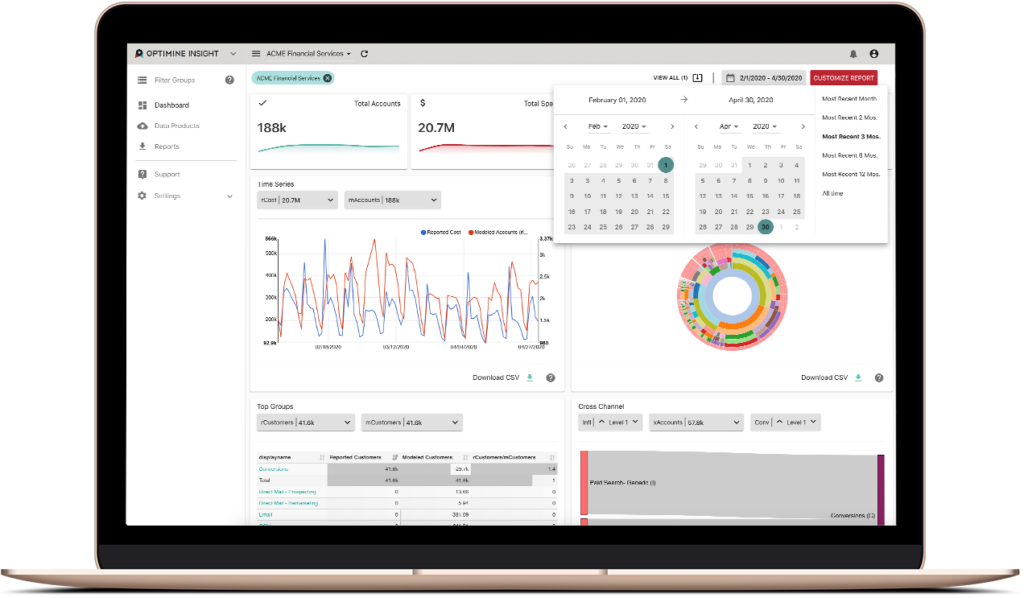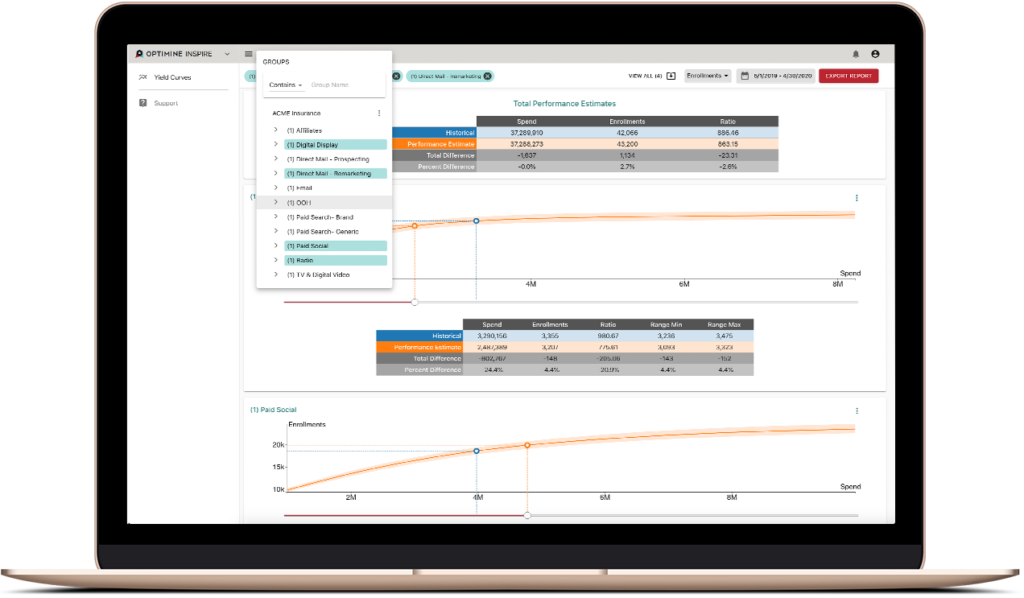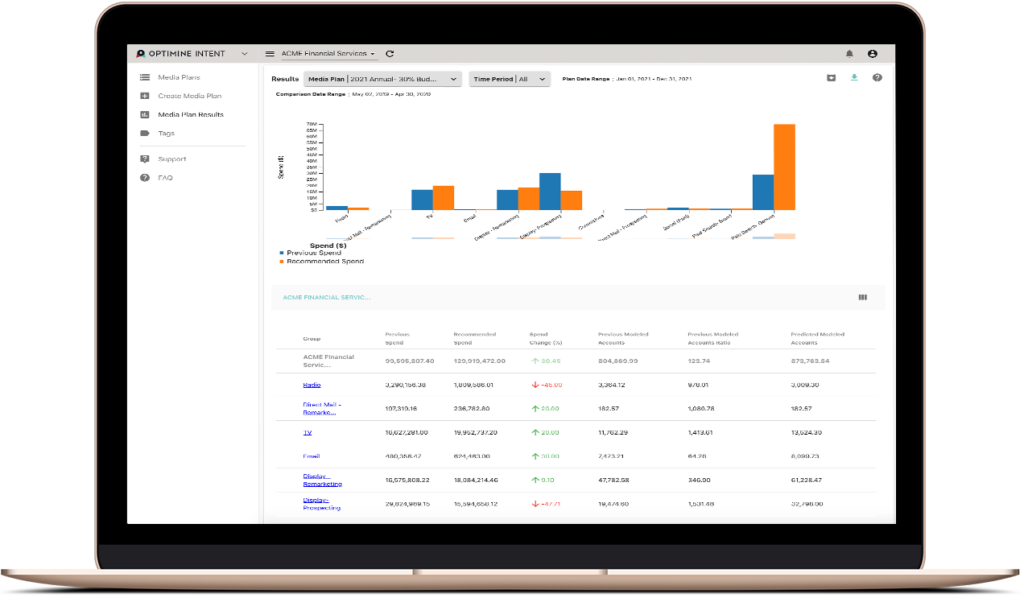How Marketing Mix Modeling Can Help Optimize Marketing Spend
10/09/2023

In the ever-evolving landscape of business and consumer dynamics, the art of effective marketing extends far beyond creative campaigns and compelling content—it hinges on a strategic and data-driven approach to budget allocation. In OptiMine’s latest blog post, we delve into the crucial realm of marketing spend optimization, unraveling the steps that businesses can take to ensure their financial resources are invested wisely for maximum impact. From setting clear objectives and understanding your audience to leveraging cutting-edge technology and adapting in real-time, this comprehensive guide navigates the intricate terrain of marketing optimization, providing insights and actionable steps to empower businesses in achieving not only their marketing goals but also a sustainable return on investment. Join us on this journey as we unlock the secrets to smarter spending, enabling your marketing efforts to thrive in an era where precision and agility are paramount.
What is Marketing Spend Optimization?
Marketing spend optimization refers to the strategic management and allocation of financial resources to maximize the efficiency and effectiveness of a company’s marketing efforts. It involves analyzing and fine-tuning the distribution of budgets across various marketing channels, campaigns, and initiatives to achieve the highest possible return on investment (ROI). This process requires a comprehensive ability to measure marketing impacts across different levels of investment and the evaluation of performance metrics that the brand wants to maximize. By leveraging data analytics, businesses can identify high-performing channels, target audiences, and messaging strategies, allowing them to allocate resources where they are most likely to generate positive outcomes. Ultimately, marketing spend optimization aims to enhance the overall impact of marketing activities while minimizing wasteful expenditures, enabling companies to achieve their goals in a cost-effective manner and adapt to the dynamic landscape of consumer preferences and market trends.
How Do You Optimize Your Marketing & Ad Spend?
Optimizing marketing spend involves a systematic approach that incorporates data analysis, strategic decision-making, and continuous monitoring. Here are the key steps to optimize your marketing spend:
1. Set Clear Objectives:
Clearly define your marketing objectives. Whether it’s brand awareness, lead generation, customer retention, or sales growth, having well-defined goals will guide your spending decisions.
2. Incorporate Constraints:
In running optimization scenarios, business knowledge and real-world realities need to be included. For example, if you know that a certain marketing channel cannot take on more spend (maybe you’ve already pre-bought the media, or no more inventory is available) these conditions need to be accounted for. An optimized budget needs to be realistic and achievable which requires that constraints need to be accounted for.
3. Conduct Data Analysis:
Leverage data analytics tools (like OptiMine) to analyze the performance of past marketing campaigns. Identify which channels and strategies have delivered the best results and which have underperformed, and at what levels of investment.
4. Scenario Plan:
Getting to an optimized budget requires scenario planning, and running simulations across a wide set of potential investment levels, estimated yields and a full accounting for diminishing returns. By running many different scenarios, brands can understand potential outcomes and develop investment playbooks that can be used for different future market conditions. Brands that scenario plan with advanced analytics typically outperform those that do not.
5. Monitor Key Performance Indicators (KPIs):
Establish and regularly monitor key performance indicators (KPIs) that align with your marketing objectives. This might include metrics such as conversion rates, customer acquisition cost (CAC), return on ad spend (ROAS), and customer lifetime value (CLV). By continually updating models and measures frequently over time, brands will account for the latest marketing and competitive conditions and will be able to optimize faster to take advantage of emerging opportunities before their competitors do.
6. Adapt in Real-Time:
Marketing landscapes are dynamic. Be prepared to adapt your strategies in real-time based on the performance data you receive. This agility is crucial in responding to changing market conditions and consumer behaviors.
7. Measure Incrementality:
Understand the incremental impact of your marketing efforts. This involves assessing how much value your marketing activities are adding beyond what would have occurred organically. This insight helps you focus on activities that truly drive growth. Many brands incorrectly measure direct engagement with ads (last-click for example) and assume that other ads that don’t have direct engagement don’t have value. Getting the measure of incremental impact is one of the most important success criteria for marketing performance.
By following these steps, brands can refine their marketing strategies, allocate resources more effectively, and achieve better overall performance and return on investment.
How OptiMine Can Help with Marketing Budget Optimization
As a marketing mix modeling solution, OptiMine’s 3 products (Insight, Inspire, & Intent) work together to help brands optimize their marketing budget to their full potential.
Insight: Agile, Actionable Performance Measurement

OptiMine’s cloud-based Insight platform automatically builds tens of thousands of models to accurately measure and help you understand how ALL of your channels interact and contribute to sales performance, while delivering a rich and robust set of insights, tools, reporting, dashboards and data feeds to guide you to the best marketing spend decisions and performance lift.
Inspire: Tactical Guidance for Immediate Marketing Performance Lift

OptiMine Inspire guides tactical “next best action” decisions for rapid performance improvement. Determine the best areas for marketing investments, run rapid scenario plans, and examine yield and saturation levels– all at detailed campaign levels.
Intent: Strategic Media & Budget Planning and Optimization

OptiMine Intent allows brands to define and configure all their scenarios, goals and constraints to get detailed, optimized marketing budgets and forecasts to achieve their target using machine learning, high scale cloud computing, and sophisticated algorithms.
Contact us today to learn more about how OptiMine can help your brand optimize marketing spend!

